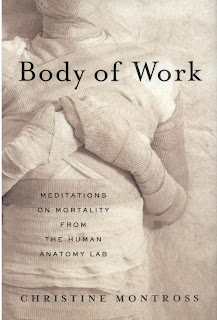
Juniors and seniors in high school should rush right out and pick up a copy of today’s The New York Times and read the pullout section entitled Education Life. Mixed in with a variety of ads and invitations from colleges are articles that run the gamut from serious/informative to frivolous/interesting. First, the serious and important information:
In a section called “Strategy Testing” by Samantha Stainburn, students are counseled about whether or not to submit SAT or other test scores. More and more, colleges are allowing prospective students to skip the SAT for other indicators of ability and intelligence. According to Stainburn, “More than 700 colleges will consider your application without a peek” at the SAT score. Evidently, this trend came out of the need to allow students who do not test well to demonstrate their competence to attend college. Stainburn breaks down the article into four sections: The Reality, How To, Caveats, and Success Rate. Basically, it all boils down to the score: if your score is low, applying to a school that places less importance on the test is advisable. Students with good scores have nothing to worry about when they apply. The article presents some interesting ideas about this new trend.
More chart than article, “Data” presents the latest figures from a large number of colleges and universities regarding faculty to student ratios, class sizes, and number of undergraduates. An interesting entry: the largest college in the country is Miami Dade College with 45,048 undergraduates, 35 percent full time faculty, 26:1 student/faculty ratio, and 67 percent of their classes containing 20-49 students. One of the smallest is the University of Texas, El Paso with 16,486 students, 62 percent full time faculty, 20:1 student/faculty ratio, and 57 percent of their courses with 20-49 students.
When listening to a senior student in high school describe his college application choices, one often hears the word “safeties,” as in, “I applied to UCLA, Dartmouth, and Cal State Northridge as my safety school. “Safety school” is a word one should never mention when speaking to an Admissions official at a college or university. It is akin to saying, “You are my last choice.” In a piece called “The New Safeties,” Michelle Slatella examines this application phenomenon of selecting at least one school as your last resort. “With more students applying each year, many colleges that were traditionally considered safeties have shed that label, sending applicants scrambling to find replacements.” She breaks her analysis down to four sections: Don’t Call Them Safeties; How Likely Is Your “Most Likely”; Apply With The Same Oomph; and Pick A College You Can Live With. Included is a sidebar on suggested new fallback campuses students might want to investigate.
Financial aid and student debt are growing concerns for students and parents. Laura Pappano examines “Lessons From The Loan Scandals” and offers important advice for parents and students shopping for loans. The article is lengthy and meticulously researched. Included is a sidebar listing actual students who applied for loans in June with the results.
Among the less imperative but still interesting articles is a piece by Claire Dederer on student dorm room door decorations. Included are a number of photographs of doors from across the country. With the often elaborate decorations, I wonder how much time went into the decorations, and if students spent that much time studying as well. Yes, the decorations are that involved.
Charles McGrath, former Book Review editor, weighs in on two recent books regarding college life and the unfortunate tragedies of the last year: April 16th: Virginia Tech Remembers by Roland Lazenby, a teacher and journalist at the college, and Sugarcane Academy: How A New Orleans Teacher And His Storm-struck Students Created A School To Remember by Michael Tisserand. Both books stress the importance of community, according to McGrath, a topic of interest to prospective students and their parents.
Finally, Jamie Wallis presents a photo essay, culled from the work of student photographers around the country, on the absence of shoes on campuses ranging from Los Angeles to Oregon. Winter temperatures drop into the 30s in Oregon, Wallis reminds us. In the essay, we see students with bare feet on desks and tables, in the library, standing on line at the cafeteria, and of course, in the classroom. Heaven for those of us who hate wearing shoes; scary for those of us profoundly scared by the possibility of foot fungus.
There are many other articles and tidbits for students and parents, so check it out. The section can be accessed online as well.


